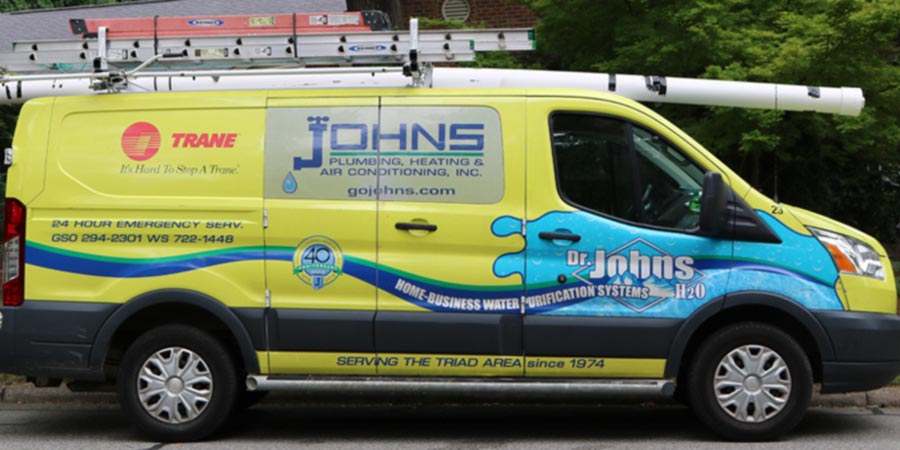A cool and comfortable house provides relief when it’s hot and humid outside. That’s why you depend on your air conditioner so much. To ensure your AC system can handle the workload without trouble, you must install it correctly, repair it when necessary and maintain it annually. Johns Plumbing, Heating & Air Conditioning, Inc. provides AC services to homes and businesses in Greensboro, High Point and Winston-Salem, NC. With our expert assistance, you’ll boost comfort, minimize cooling costs, avoid expensive breakdowns and reduce your property’s carbon footprint.

Air Conditioning Installation in the Triad
When you need a new AC installation in the Triad, let our service technicians handle the what, where, when and how of the process. We’ll help you invest in the most energy-efficient air conditioning installation for your home or business by performing a meticulous cooling load calculation beforehand, ensuring your system isn’t undersized or oversized. Since we’re a trusted Trane Comfort Specialist, we sell and install highly advanced air conditioners you can’t find at big-box retailers in Greensboro, High Point or Winston-Salem, NC. We offer state-of-the-art products at affordable flat-rate.
24/7 AC Repair and Replacement in the Triad
When your air conditioner fails to cool your house sufficiently or completely breaks down, we want to be your superhero and rescue you from discomfort. The key to minimizing AC repair costs is to contact a professional as soon as you notice a problem. If you notice these signs, schedule an emergency air conditioning repair immediately:
- Airflow from the supply vents is weak.
- Air conditioner cycles on and off constantly.
- You hear banging, grinding, hissing or squealing.
- Air conditioner emits musty or burning odors.
- There’s water pooling around the air conditioner.
- Some rooms in your house are cooler than others.
- Your home feels hot and stuffy all the time.
- Your cooling bills have skyrocketed recently.
- Air conditioner doesn’t turn on.
Affordable AC Services in the Triad
Johns Plumbing, Heating & Air Conditioning, Inc. is a locally-owned company with more than 100 years of combined experience on the staff. Founded in 1974, we bring a wealth of knowledge to every air conditioning installation, repair and maintenance service. Here’s why we’ve satisfied more than 250,000 residential and commercial customers:
- Provide quality work and superior customer service at a fair price.
- Stand behind our workmanship for a year without asking questions.
- Available for 24-hour emergency AC repair and replacement services.
- Offer state-of-the-art AC installations at affordable flat-rate prices.
- Each of our divisions has specially trained service technicians.
- Believe exceptional customer care is the root of our foundation.
Contact Johns Plumbing, Heating & Air Conditioning, Inc. to schedule your next AC installation or air conditioning repair in Greensboro, High Point or Winston-Salem, NC. Our service technicians will do everything they can to exceed your expectations.
